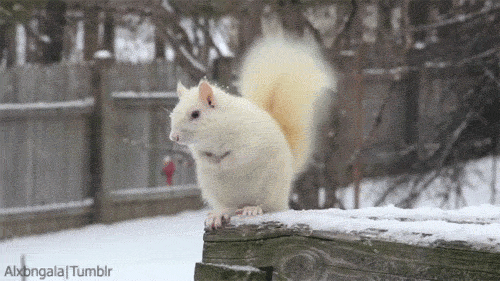
Darby Hayes
Elementary Education
Squirrelly Summarization!
Reading to Learn Design
Rationale: In this lesson, children will learn how to read expository texts in order to gather information. Strengthening reading comprehension while reading text for information is the next step after learning to read text fluently. In other words, children must learn to read to learn. Summarizing will help students understand the whole idea of the text. This allows them to pick up only the important information, leaving out any trivial information.
Materials:
-
Pencils and paper for each student
-
Rubric for grading summaries/comprehension quiz
-
Individual copies of “Why do Squirrels have Bushy Tails?” Discovery Kids article
Procedures:
1. Say: “Today, we will work on summarization and practice how to summarize a text on squirrels from Discovery Kids. Summarizing is a wonderful tool to use after reading a text. When summarizing, you only want to state the most important information of the text and leave behind any information that is not important (trivial) or repeated information.”
2. Say: “Before we practice our summarization, lets talk about an important vocabulary word that you will read in the article: appendage. An appendage is something that is attached to something larger or more important. An appendage could be your arm, a dog’s tail, or even a leaf on a tree. For example: “The cat’s fluffy appendage flicked back and forth.” That means I saw the cat’s tail moving from side to side. Which of these objects has an appendage? A car or a tree? A ball or a lizard? A doll or a jacket? Finish the sentence: The _________’s appendage falls off but always grows back. (Example answers: lizard, flower, tree).”
3. Say: “Now, I am going to pass out the article. This article is about squirrels. Have you ever noticed how big and bushy a squirrel’s tail is? Why are their tails so bushy? Do squirrels have big tails just for decoration, or do they have a more important purpose? Let’s read the first paragraph of the article to find out why a squirrel’s tail is so bushy!”
5. [Ask students about what they think the main idea is] “That is correct!! The article talks all about squirrel’s tails! Usually the main idea is relevant to the title of the article or is mentioned a lot throughout the article. [Ask students what they think the main point is] Great job!! The message is that a squirrel’s tail is used for balance, protection, and communication.”
6. Say: “Now I want you to read the second paragraph of the article and summarize it on your own. Make sure to give the main idea and supporting sentences. Write your summarization on your piece of paper. Remember to pick out the most important information for your summarization and leave out any trivial information! After everyone has finished summarizing the entire article, we are going to have a quiz to check for your understanding.”
Assessment: To conclude the lesson, Students will be assessed on how well they completed his or her summaries. I will use this scoring rubric to grade the summaries for correct, adequate information:
Did the student…
Yes No
Give a main idea?
Give supporting sentences?
Delete trivial information?
Organize ideas into paragraph form?
There will also be a comprehension quiz:
-
What is the main use of a squirrel’s tail? (Balancing)
-
What is the squirrel’s tail compared to when talking about balancing? (A tightrope walker’s long pole)
-
In what ways do squirrels communicate with their tails? Give specific examples. (Flicking tail when alarmed, fluffing tail when aggressive)
-
In the second paragraph, what else do we discover the squirrel’s tail is used for? (Keeping warm or cool)
-
How does the squirrel use its tail to keep warm and cool? (Wraps around body to keep warm, raises over head to use as sunshade to keep cool)
References:
Blair, Audrey. “Growing Tall with Summarization.” http://abb0036.wixsite.com/funwithreading/reading-to-learn
Lindsey, Lauren. “You’ve Cat to be Kitten Me…Summary!” http://laurielel12.wixsite.com/lel0026/reading-to-learn
Reading Genie website: http://www.auburn.edu/academic/education/reading_genie/
Discovery Kid’s: “Why do Squirrel’s have Bushy Tails?” http://discoverykids.com/articles/why-do-squirrels-have-bushy-tails/
Entries Index:
http://www.auburn.edu/academic/education/reading_genie/Entries.html
